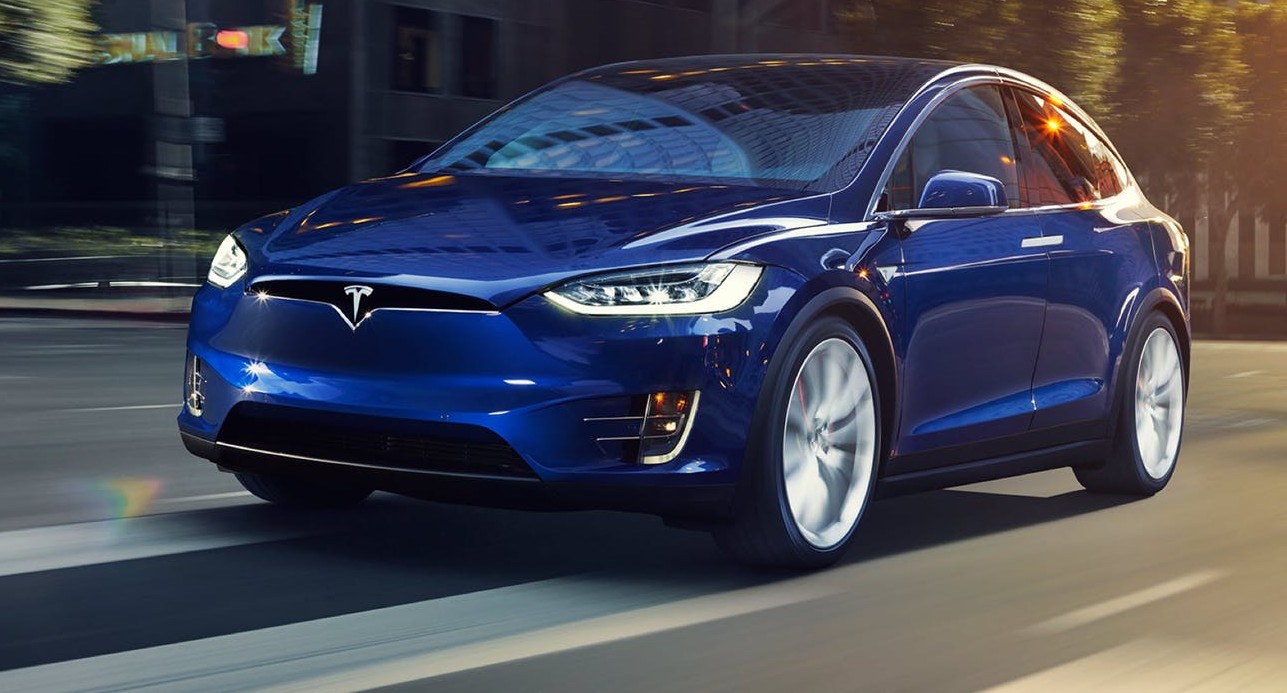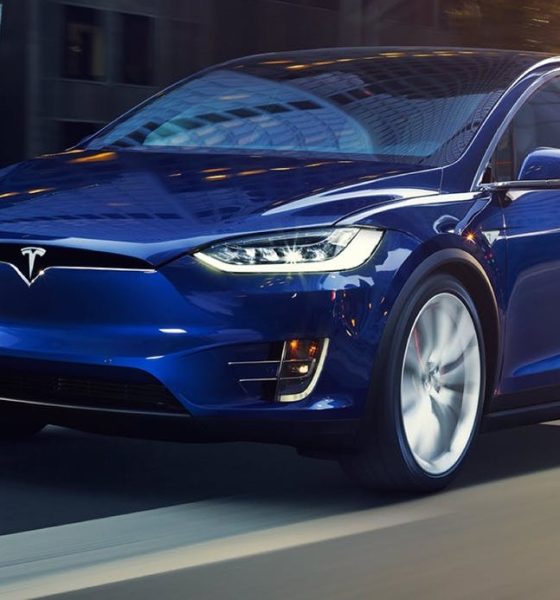

News
Tesla, other EVs required to have ‘traditional engine’ sound to meet new EU rule
Electric vehicles such as Teslas are known for being incredibly quiet. Without an internal combustion engine’s controlled explosions under the hood, electric cars are capable of operating in near-total silence. This, according to a new EU rule, will be changed soon.
A new EU rule coming into force on Monday requires new electric vehicles to be equipped with a pedestrian noisemaker. The new regulations follows concerns that low-emission vehicles such as battery-electric cars are simply too quiet for the road, making them a risk for pedestrians, cyclists, and visually-impaired individuals (among others). According to the new ruling, a car’s Acoustic Vehicle Alert System (AVAS) must be engaged when reversing or traveling below 12 mph (19 km/h).
In its ruling, the EU noted that vehicles usually back up or travel at low speeds in areas that are near people, such as city streets or crosswalks, though the new regulations does allow drivers to deactivate their vehicles’ pedestrian noisemakers as necessary. By 2021, the EU noted that all electric vehicles — not just new models coming to the market — must be equipped with an AVAS.
Quite interestingly, the ruling mentioned that the noise-emitting devices would give EVs a sound that is similar to a “traditional engine,” according to a BBC report. This particular detail is notable, since making electric vehicles sound identical to conventional cars will likely result in some levels of noise pollution, something that EVs completely avoid.
Road noises, after all, are considered the second most harmful environmental stressor in Europe, surpassed only by air pollution. The European Federation for Transport and Environment (also known as Transport and Environment or T&E), for one, notes that vehicle noises are a “major cause, not only of hearing loss, but also of heart disease, learning problems in children and sleep disturbance.”
On the flip side, pedestrian noisemakers do make it far easier for the visually impaired to detect where vehicles are on the road. This was highlighted by Guide Dogs for the Blind, a charity that has complained about the absence of sounds from low-emission vehicles. Guide Dogs welcomed the new EU ruling, though the group noted that it would be better if EVs are required to produce sounds at all speeds.
The UK’s Minister of State at the Department for Transport, Michael Ellis, noted in a statement to the publication that the ruling came about as a result of the government wanting the “benefits of green transport to be felt by everyone,” while considering the safety needs of people at the same time. “This new requirement will give pedestrians added confidence when crossing the road,” he said.
While the consideration for the visually-impaired is quite admirable in the new ruling, it is quite interesting to see the EU regulations require electric vehicles to sound like traditional gas cars. EVs, after all, could have their own unique sound, as could be seen in the Jaguar I-PACE, the Audi e-tron, and even the prototype units of the Porsche Taycan. Even Tesla seems to be working on an AVAS, as hinted at by what appears to be a speaker grille on a Model 3’s underbody. Nevertheless, when Tesla rolls out its vehicles’ pedestrian noisemakers, one could be assured that it would be designed to minimize noise pollution, and it would most likely not simulate the sounds of a “traditional” engine.

News
Nvidia CEO Jensen Huang explains difference between Tesla FSD and Alpamayo
“Tesla’s FSD stack is completely world-class,” the Nvidia CEO said.

NVIDIA CEO Jensen Huang has offered high praise for Tesla’s Full Self-Driving (FSD) system during a Q&A at CES 2026, calling it “world-class” and “state-of-the-art” in design, training, and performance.
More importantly, he also shared some insights about the key differences between FSD and Nvidia’s recently announced Alpamayo system.
Jensen Huang’s praise for Tesla FSD
Nvidia made headlines at CES following its announcement of Alpamayo, which uses artificial intelligence to accelerate the development of autonomous driving solutions. Due to its focus on AI, many started speculating that Alpamayo would be a direct rival to FSD. This was somewhat addressed by Elon Musk, who predicted that “they will find that it’s easy to get to 99% and then super hard to solve the long tail of the distribution.”
During his Q&A, Nvidia CEO Jensen Huang was asked about the difference between FSD and Alpamayo. His response was extensive:
“Tesla’s FSD stack is completely world-class. They’ve been working on it for quite some time. It’s world-class not only in the number of miles it’s accumulated, but in the way it’s designed, the way they do training, data collection, curation, synthetic data generation, and all of their simulation technologies.
“Of course, the latest generation is end-to-end Full Self-Driving—meaning it’s one large model trained end to end. And so… Elon’s AD system is, in every way, 100% state-of-the-art. I’m really quite impressed by the technology. I have it, and I drive it in our house, and it works incredibly well,” the Nvidia CEO said.
Nvidia’s platform approach vs Tesla’s integration
Huang also stated that Nvidia’s Alpamayo system was built around a fundamentally different philosophy from Tesla’s. Rather than developing self-driving cars itself, Nvidia supplies the full autonomous technology stack for other companies to use.
“Nvidia doesn’t build self-driving cars. We build the full stack so others can,” Huang said, explaining that Nvidia provides separate systems for training, simulation, and in-vehicle computing, all supported by shared software.
He added that customers can adopt as much or as little of the platform as they need, noting that Nvidia works across the industry, including with Tesla on training systems and companies like Waymo, XPeng, and Nuro on vehicle computing.
“So our system is really quite pervasive because we’re a technology platform provider. That’s the primary difference. There’s no question in our mind that, of the billion cars on the road today, in another 10 years’ time, hundreds of millions of them will have great autonomous capability. This is likely one of the largest, fastest-growing technology industries over the next decade.”
He also emphasized Nvidia’s open approach, saying the company open-sources its models and helps partners train their own systems. “We’re not a self-driving car company. We’re enabling the autonomous industry,” Huang said.
Elon Musk
Elon Musk confirms xAI’s purchase of five 380 MW natural gas turbines
The deal, which was confirmed by Musk on X, highlights xAI’s effort to aggressively scale its operations.

xAI, Elon Musk’s artificial intelligence startup, has purchased five additional 380 MW natural gas turbines from South Korea’s Doosan Enerbility to power its growing supercomputer clusters.
The deal, which was confirmed by Musk on X, highlights xAI’s effort to aggressively scale its operations.
xAI’s turbine deal details
News of xAI’s new turbines was shared on social media platform X, with user @SemiAnalysis_ stating that the turbines were produced by South Korea’s Doosan Enerbility. As noted in an Asian Business Daily report, Doosan Enerbility announced last October that it signed a contract to supply two 380 MW gas turbines for a major U.S. tech company. Doosan later noted in December that it secured an order for three more 380 MW gas turbines.
As per the X user, the gas turbines would power an additional 600,000+ GB200 NVL72 equivalent size cluster. This should make xAI’s facilities among the largest in the world. In a reply, Elon Musk confirmed that xAI did purchase the turbines. “True,” Musk wrote in a post on X.
xAI’s ambitions
Recent reports have indicated that xAI closed an upsized $20 billion Series E funding round, exceeding the initial $15 billion target to fuel rapid infrastructure scaling and AI product development. The funding, as per the AI startup, “will accelerate our world-leading infrastructure buildout, enable the rapid development and deployment of transformative AI products.”
The company also teased the rollout of its upcoming frontier AI model. “Looking ahead, Grok 5 is currently in training, and we are focused on launching innovative new consumer and enterprise products that harness the power of Grok, Colossus, and 𝕏 to transform how we live, work, and play,” xAI wrote in a post on its website.
Elon Musk
Elon Musk’s xAI closes upsized $20B Series E funding round
xAI announced the investment round in a post on its official website.

xAI has closed an upsized $20 billion Series E funding round, exceeding the initial $15 billion target to fuel rapid infrastructure scaling and AI product development.
xAI announced the investment round in a post on its official website.
A $20 billion Series E round
As noted by the artificial intelligence startup in its post, the Series E funding round attracted a diverse group of investors, including Valor Equity Partners, Stepstone Group, Fidelity Management & Research Company, Qatar Investment Authority, MGX, and Baron Capital Group, among others.
Strategic partners NVIDIA and Cisco Investments also continued support for building the world’s largest GPU clusters.
As xAI stated, “This financing will accelerate our world-leading infrastructure buildout, enable the rapid development and deployment of transformative AI products reaching billions of users, and fuel groundbreaking research advancing xAI’s core mission: Understanding the Universe.”
xAI’s core mission
Th Series E funding builds on xAI’s previous rounds, powering Grok advancements and massive compute expansions like the Memphis supercluster. The upsized demand reflects growing recognition of xAI’s potential in frontier AI.
xAI also highlighted several of its breakthroughs in 2025, from the buildout of Colossus I and II, which ended with over 1 million H100 GPU equivalents, and the rollout of the Grok 4 Series, Grok Voice, and Grok Imagine, among others. The company also confirmed that work is already underway to train the flagship large language model’s next iteration, Grok 5.
“Looking ahead, Grok 5 is currently in training, and we are focused on launching innovative new consumer and enterprise products that harness the power of Grok, Colossus, and 𝕏 to transform how we live, work, and play,” xAI wrote.








